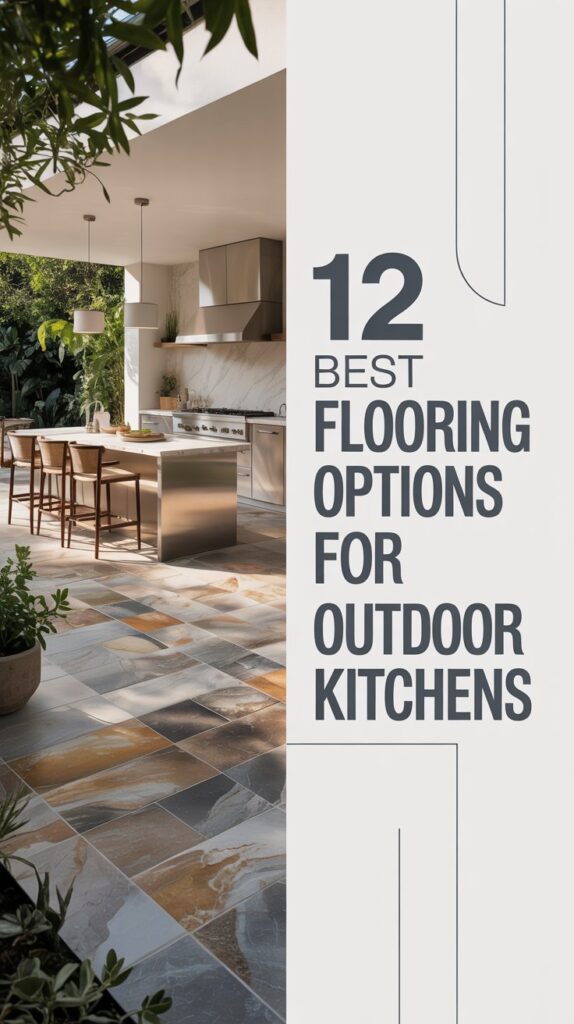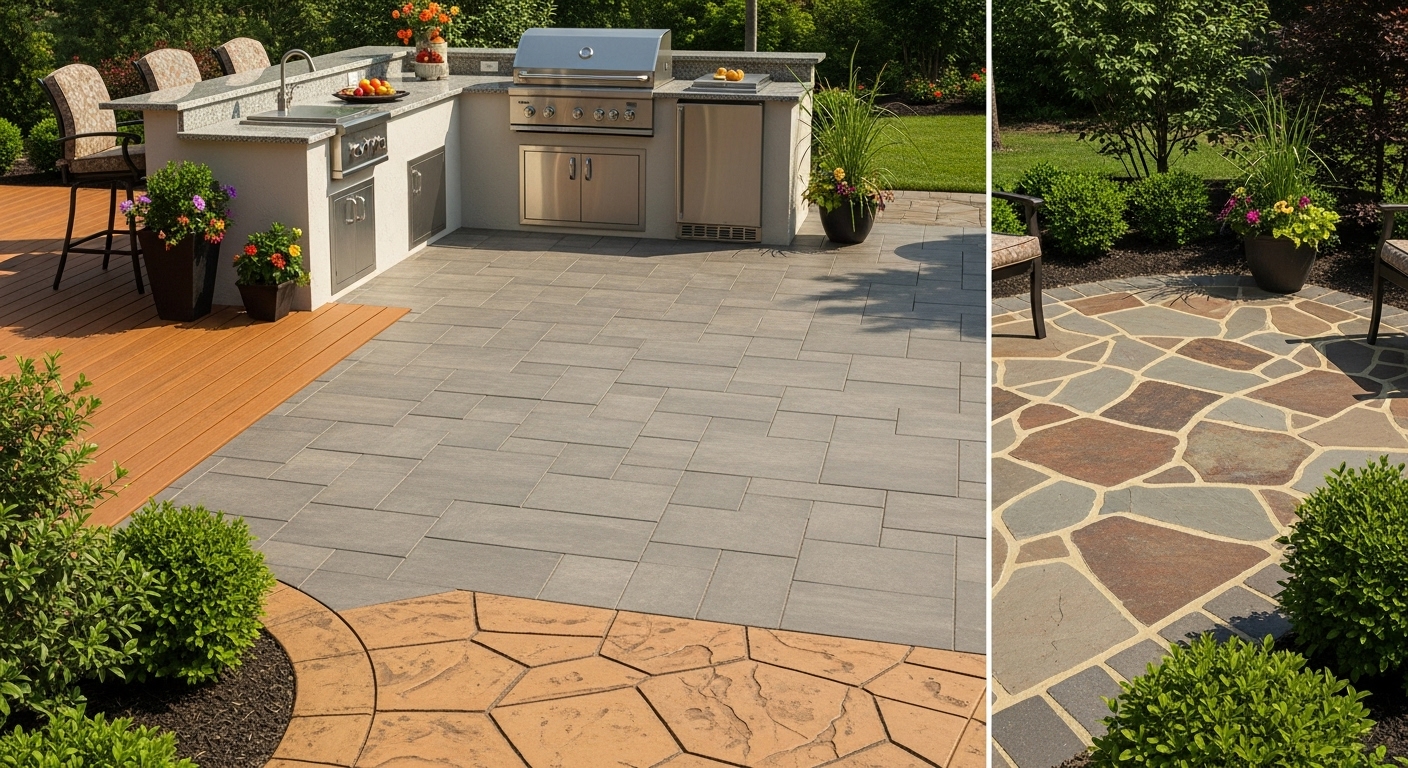So, you’re cooking up plans for an outdoor kitchen and wondering, “What’s the best flooring for this setup that doesn’t make me regret every splash and spill?” Outdoor kitchens are amazing imagine grilling under the stars and having people over without stressing about muddy shoes or accidental grease stains. But the flooring? That’s the game-changer.
Let me take you through the 12 best flooring options for outdoor kitchens the good, the tough, and the pretty so you can pick the perfect one without the headache.
Why Choose the Best Flooring for Your Outdoor Kitchen?

Investing in high-quality outdoor kitchen flooring goes far beyond appearances it’s a move that protects both safety and long-term value. Outdoor surfaces battle harsh sun, heavy rain, and sudden temperature swings, so premium materials that resist cracking, fading, and mold are essential.
Textured porcelain and sealed pavers offer grip even when grease or water hits the ground. They clean easily, elevate the space visually, stay cool underfoot, and create a polished, durable setting that enhances overall usability and appeal.
Recommended:- Christmas Outdoor Kitchen Ideas with Swing Seating
1. Stamped Concrete
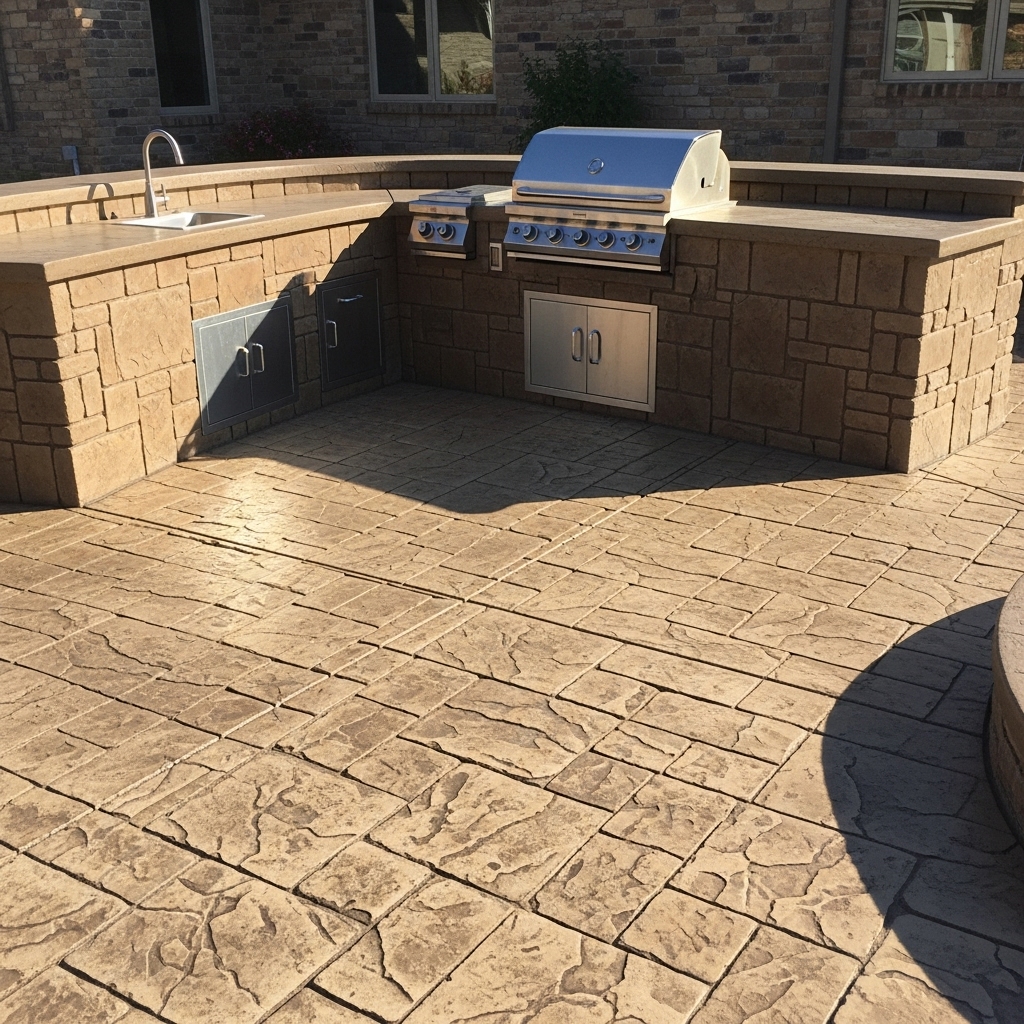
Stamped concrete mimics pricier materials like stone or brick while offering unbeatable affordability. Pour it on-site for a custom pattern that flows with your kitchen’s design.
- Pros: Highly durable, low-cost (around $8–$12 per sq ft), endless customization.
- Cons: Can crack in freeze-thaw climates; needs resealing every 2–3 years. Tip: Opt for a textured stamp for extra grip near the grill.
2. Porcelain Tile

Sleek and modern, porcelain pavers are non-porous powerhouses, resisting stains from marinades and fading from sun. Wood-look varieties add warmth without the upkeep.
- Pros: Weatherproof, slip-resistant textures available, easy to clean ($10–$15 per sq ft).
- Cons: Hard underfoot for long stands; professional install recommended.
- Tip: Choose frost-rated tiles for colder regions to avoid cracking.
3. Natural Stone (Flagstone or Travertine)
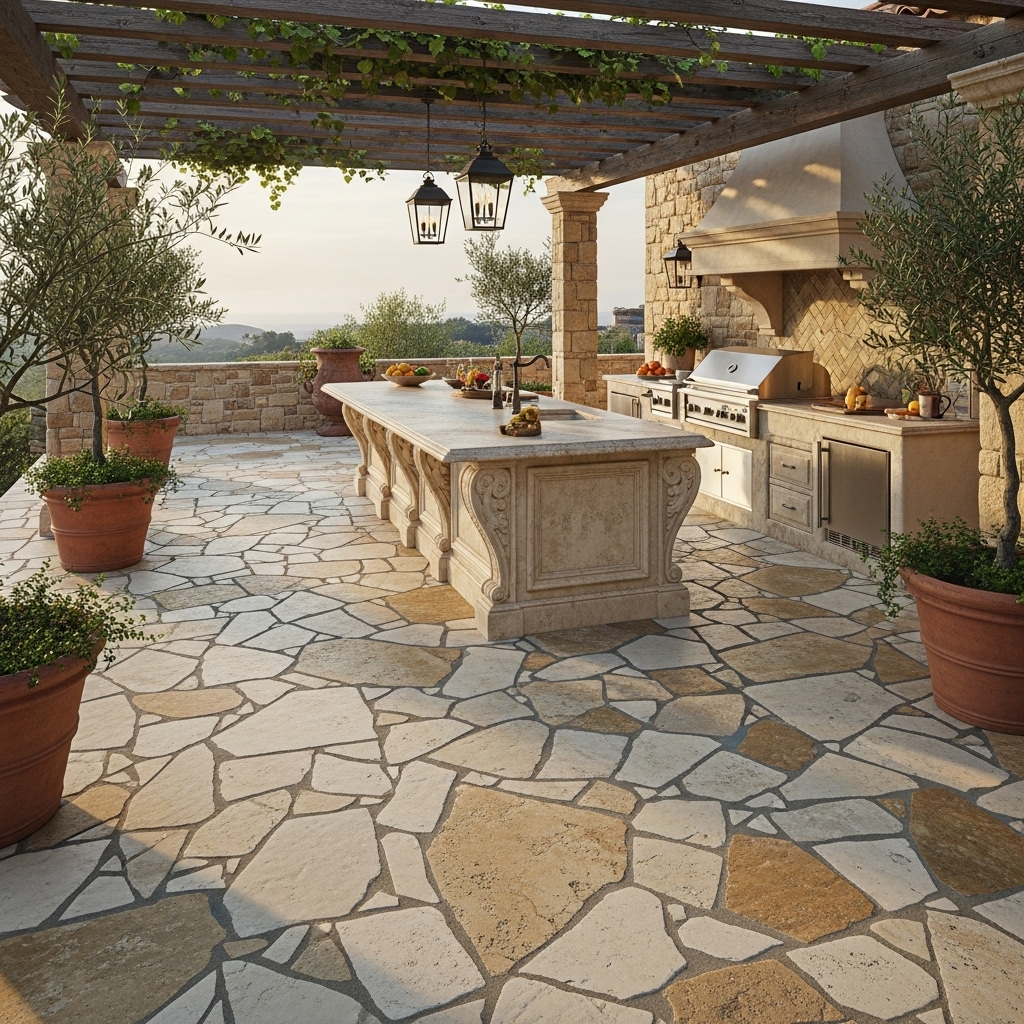
For a luxurious, organic vibe, flagstone or travertine brings earthy elegance straight from nature. Its irregular shapes create a rustic mosaic perfect for Mediterranean-inspired kitchens.
- Pros: Timeless beauty, heat-resistant, naturally slip-resistant ($15–$25 per sq ft).
- Cons: Porous types need sealing; uneven surface can trap dirt.
- Tip: Seal annually and pair with neutral grout for low-maintenance contrast.
4. Brick Pavers

Classic and charming, brick pavers lay in herringbone patterns for a timeless courtyard feel. They’re ideal for cozy, traditional outdoor kitchens.
- Pros: Excellent traction, durable against traffic, warm aesthetic ($8–$14 per sq ft).
- Cons: Absorbs grease if unsealed; moss-prone in shade.
- Tip: Use polymeric sand in joints to prevent weed growth and enhance stability.
5. Composite Decking

Eco-friendly composite decking, crafted from recycled materials, delivers the warmth of wood without its headaches. These durable boards resist rot, warping, and constant upkeep while offering a smooth, splinter-free surface.
Blending long-lasting strength with a natural aesthetic, composite decking creates a reliable outdoor space that holds up through every season.
- Pros: Low maintenance, insect-resistant, comfortable barefoot ($20–$35 per sq ft).
- Cons: Heats up in direct sun; higher upfront cost.
- Tip: Select capped versions for better UV protection in sunny yards.
6. Teak Wood Flooring
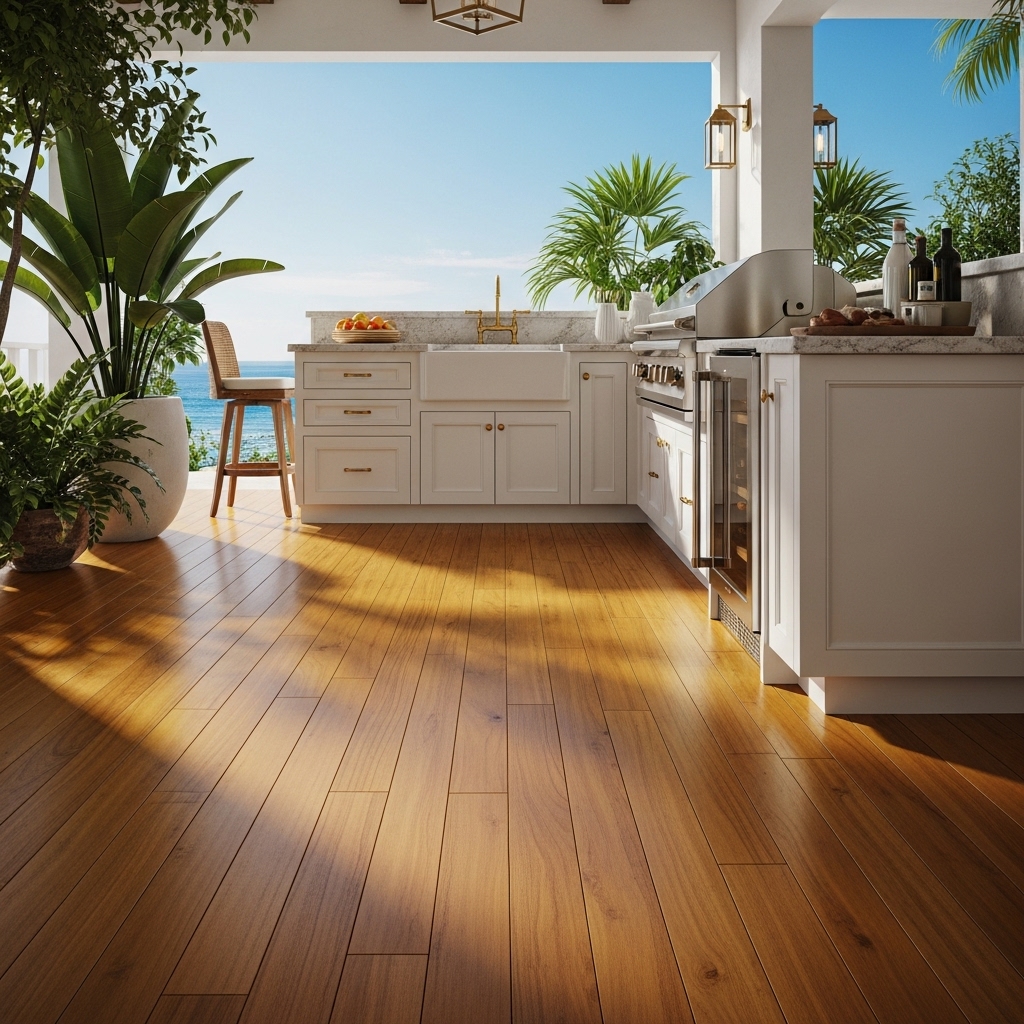
Teak wood flooring brings a luxurious, sun-kissed glow to any space, its deep golden hues adding warmth that feels both refined and relaxed. The natural grain patterns create subtle movement, making it a standout choice for tropical or coastal-inspired kitchens seeking elegance with a laid-back, inviting atmosphere.
- Pros: Naturally oily for water resistance, slip-proof when wet, ages gracefully ($25–$40 per sq ft).
- Cons: Premium price; requires occasional oiling.
- Tip: Source sustainably and install with hidden fasteners for a clean look.
7. Polished Concrete

Glossy and industrial in character, polished concrete flooring delivers a smooth, continuous surface that elevates any modern setting. Its sleek finish reflects light beautifully, while the tough, low-maintenance nature of the slab makes post-celebration cleanup effortless, turning every gathering into a stylish yet practical experience.
- Pros: Sleek finish, highly durable, affordable ($6–$10 per sq ft).
- Cons: Slippery when wet; absorbs heat quickly.
- Tip: Add a non-slip sealer and integrate heating elements for chilly evenings.
8. Terracotta Tiles
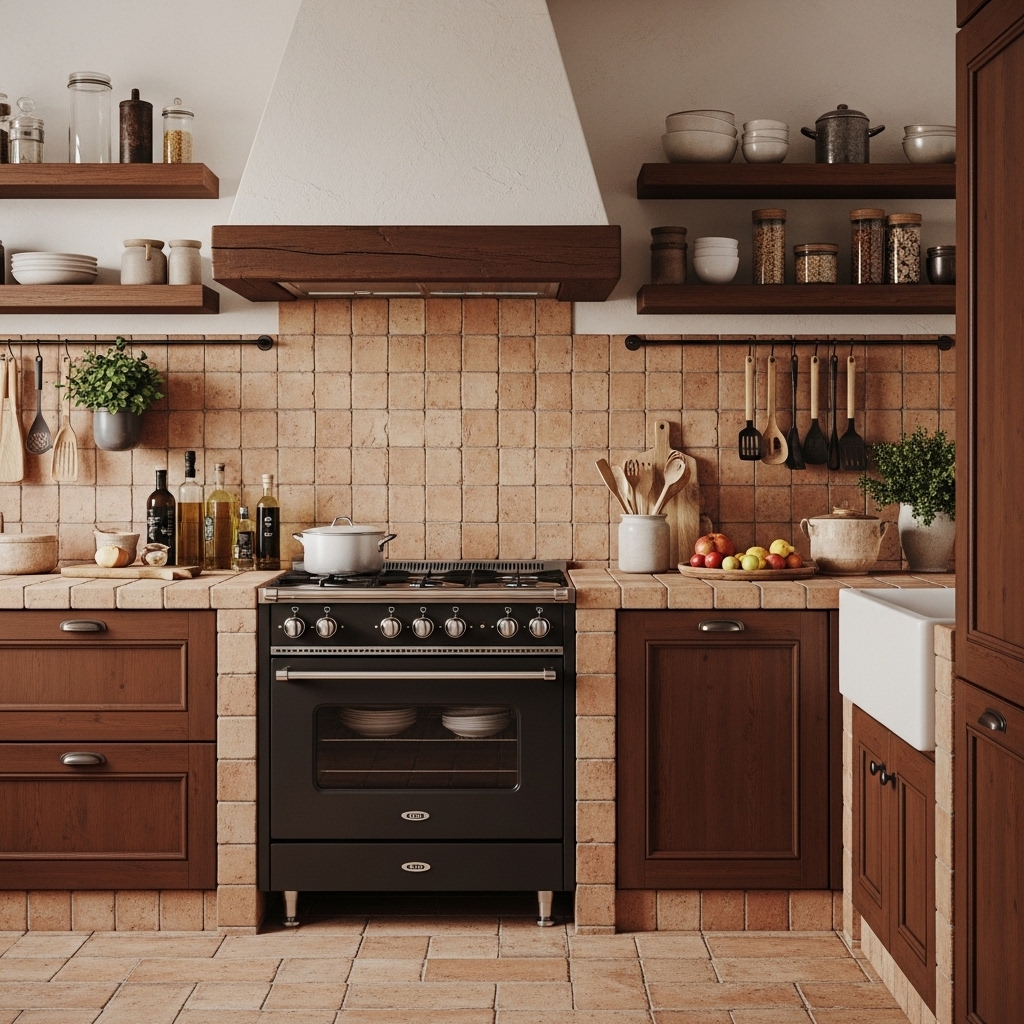
Rustic terracotta tiles bring a warm, lived-in charm that echoes the character of classic Spanish haciendas. Their earthy red tones deepen the mood of a kitchen, adding a soulful touch that feels both timeless and inviting.
Each tile carries subtle variations, giving the space a handcrafted personality that modern materials rarely capture. In casual cooking areas, this rich, grounded palette creates an atmosphere where comfort, authenticity, and a hint of old-world romance come together effortlessly.
- Pros: Breathable for humidity, affordable warmth ($7–$12 per sq ft).
- Cons: Porous—must seal against stains; fades if unsealed.
- Tip: Hand-glazed options resist fading; hose gently to preserve patina.
9. Rubber Pavers

Cushioned rubber pavers offer a surprisingly comfortable and family-friendly option for kitchen flooring. Crafted from durable, often recycled materials, these tiles deliver a gentle, playground-style softness underfoot that reduces strain during long cooking sessions.
Their shock-absorbing nature adds a layer of safety, especially in busy homes with kids. Beyond comfort, they’re resilient, easy to clean, and capable of handling daily wear without losing their shape. This blend of practicality, sustainability, and comfort makes rubber pavers a standout choice for modern kitchens.
- Pros: Shock-absorbent, ultra-slip-resistant, easy DIY install ($5–$9 per sq ft).
- Cons: Limited style options; can fade outdoors.
- Tip: Interlock for quick swaps and use in play-adjacent areas.
10. Pea Gravel
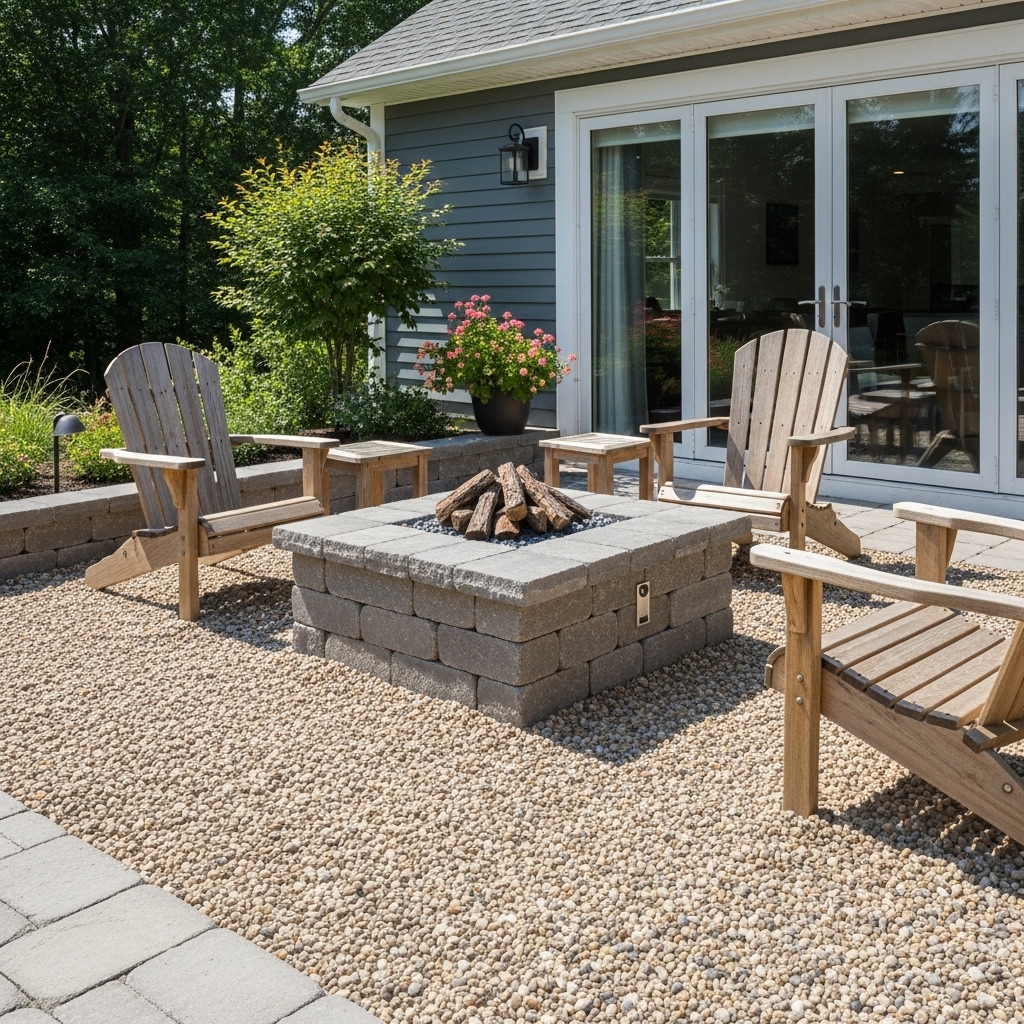
Pea gravel brings a relaxed, coastal character to any outdoor setup, especially around a fire pit kitchen. Its loose, rounded stones create a soft, beach-inspired texture that feels both casual and inviting.
This budget-friendly option spreads easily, settles naturally, and adds a subtle crunch underfoot that many homeowners love. Whether paired with rustic seating or modern accents, pea gravel delivers a laid-back atmosphere that enhances the entire space without demanding much upkeep.
- Pros: Drains instantly, inexpensive ($1–$3 per sq ft), soft underfoot.
- Cons: Tracks indoors; not ideal for wheeled carts.
- Tip: Contain with edging and top with larger stones for stability.
11. Outdoor Vinyl Planks
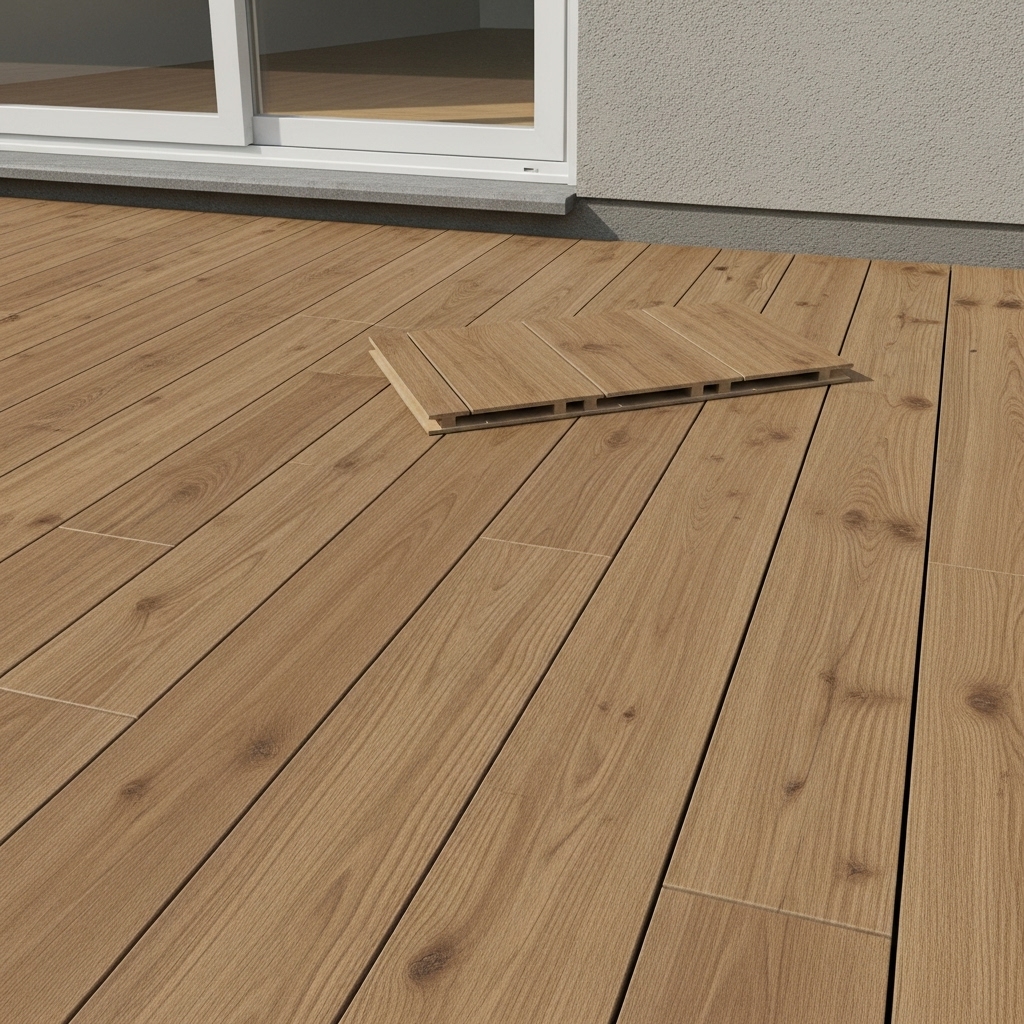
Outdoor vinyl planks offer a smart, stylish alternative to pricey hardwood or natural stone, delivering the same visual depth without draining your budget.
Their waterproof structure stands up to rain, heat, and daily wear, making them a reliable choice for patios and outdoor walkways. With a convenient click-lock system, installation feels quick and fuss-free, even for beginners. The result is a durable, attractive surface that elevates your outdoor space with minimal effort.
- Pros: Flexible for uneven bases, stain-proof, budget-friendly ($4–$8 per sq ft).
- Cons: Less durable in extreme heat; can peel over time.
- Tip: Choose UV-stabilized planks for long-lasting color.
12. Bamboo Tiles

Bamboo tiles crafted from sustainable strand-woven bamboo offer a serene, grounding presence that instantly elevates any outdoor space. Their natural fibers, tightly compressed for exceptional strength, create a surface that feels both refined and earthy.
Treated to withstand shifting weather conditions, these tiles resist warping, fading, and moisture. The subtle variations in grain and tone add depth, giving patios, walkways, and garden retreats a tranquil, spa-like character while remaining remarkably durable and eco-conscious.
- Pros: Eco-smart, lightweight, unique grain patterns ($10–$18 per sq ft).
- Cons: Needs sealing; swells in high humidity.
- Tip: Elevate on joists for airflow and pair with Asian-fusion designs.
Essential Tips for Selecting and Installing Outdoor Kitchen Flooring
Picking the perfect floor? Start with your climate frost-proof materials like porcelain shine in cold zones, while heat-resistant stone rules sunny spots. Budget-wise, factor in install: DIY gravel saves cash, but pros ensure pavers last. Always prioritize slip ratings (look for R10+), especially near sinks.
For installation, prep a level base with gravel for drainage. Seal porous surfaces yearly, and test samples in your space for color accuracy. Pinterest tip: Mix textures, like wood decks with stone accents, for visual pop. Consult local codes for load-bearing needs around heavy grills.
Conclusion
Your outdoor kitchen deserves flooring that matches its magic tough, beautiful, and built to entertain. From stamped concrete’s versatility to porcelain’s polish, these 12 options prove you don’t have to sacrifice style for stamina.
Dive into inspiration from Houzz galleries or Pinterest mood boards, then make it yours. With the right choice, every cookout becomes effortless and unforgettable. Ready to transform? Grab your measuring tape and start planning your dream alfresco haven awaits.
Frequently Asked Questions
Q: What’s the most affordable outdoor kitchen flooring? A: Pea gravel or stamped concrete—both under $10 per sq ft and easy to source.
Q: How do I clean grease from outdoor floors? A: Hose with mild soap; for tough spots, use a degreaser on sealed surfaces like porcelain.
Q: Can I use the same flooring indoors and out? A: Yes! Porcelain tiles or composite decking create seamless transitions.
Q: What’s best for wet climates? A: Brick pavers or teak wood—their natural drainage and resistance prevent slips.
Q: How long does outdoor flooring last? A: 20–50 years with proper care; seal annually and avoid harsh chemicals.
